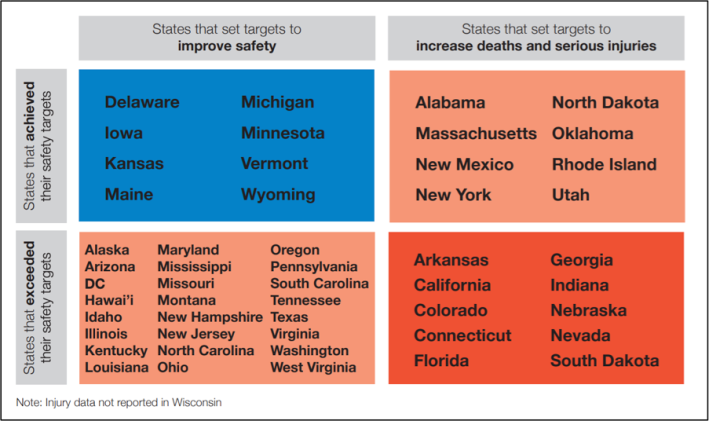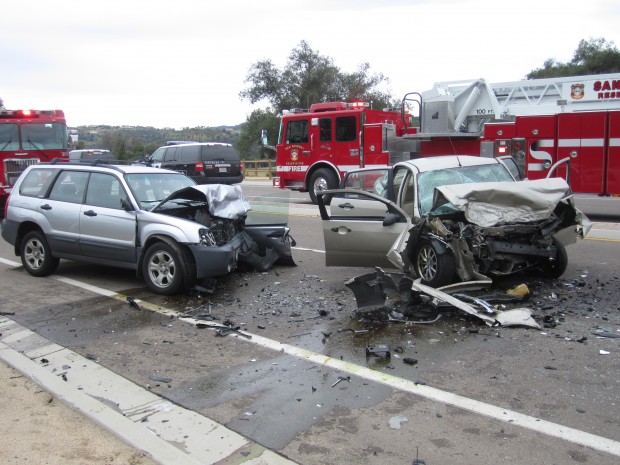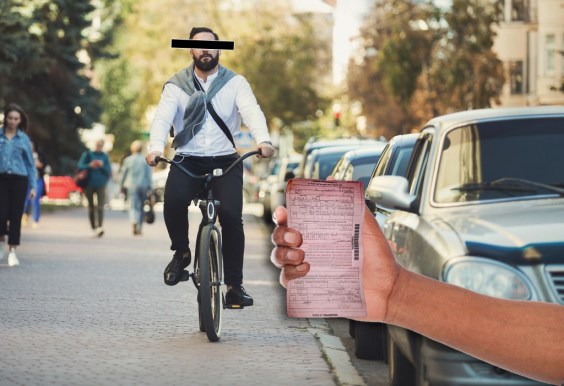Defining danger down.
The Federal Highway Administration is letting states set their own safety targets for their roadways — and the latest data show that more than a third of them are setting the bar for pedestrian and cyclist fatalities so low, it's practically underground.
The agency's Highway Safety Improvement Program recently released a state-by-state map that details which regions are setting aggressive goals to end bloodshed on their roadways, and which are soft-pedaling on their quest to curb the carnage. Because it takes time to accurately tally up all the roadway deaths in a year, the safety program doesn't widely publicize states' yearly safety targets until a full year after they set them, when official fatality stats for the previous year are finalized and it's 100 percent clear whether each state has met its goal.
Still, it's shocking to see that in 2017, 18 states explicitly told the federal agency that their roadway fatality target was actually an increase in total pedestrian and cyclist deaths over the previous year — not a reduction.
You read that right: 18 states set safety "goals" that would have meant more people outside cars would die on their streets than in the year before. It's like states are taking Daniel Patrick Moynahan's famous theory about violent crime, but perverting it to make sure our roads never get fully safe.
Smart Growth America's 2019 Dangerous by Design report highlighted the federal highway group's laissez-faire policy to state safety targets, adding that seven of the Dirty 18 states — Alabama, Arkansas, California, Florida, Georgia, Nevada, and Oklahoma — are also among the top 20 most dangerous states in the nation for people on foot. The other 11 states that define danger down are Colorado, Connecticut, Indiana, Massachusetts, Nebraska, New Mexico, New York, North Dakota, Rhode Island, South Dakota, Utah.
What's even more troubling, though, is just how many of the states that set dubious safety "goals" that would have more people die on their streets actually met their objectives.

"We can and must raise the bar by requiring states to set safety targets that reduce rather than increase the number of people killed or seriously injured while walking or biking on our streets, ultimately working toward eventually eliminating all traffic-related deaths and serious injuries," Smart Growth America added in its report. "However, to make this vision a reality, we need a strong federal policy with binding enforceable requirements that hold states to higher safety standards."
Such a policy could be crucial in holding departments of transportation accountable for the pedestrian and cyclist carnage that happens in their states. States that are allowed to set their own safety benchmarks, after all, can all too easily issue self-congratulatory press releases that they met or beat their (self-determined) targets — precisely because those targets are shamefully high.
Until the feds start demanding that state transportation leaders at least set an intention to save lives, here's hoping that every state in America holds itself to a higher standard.






